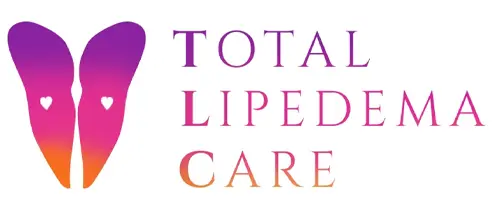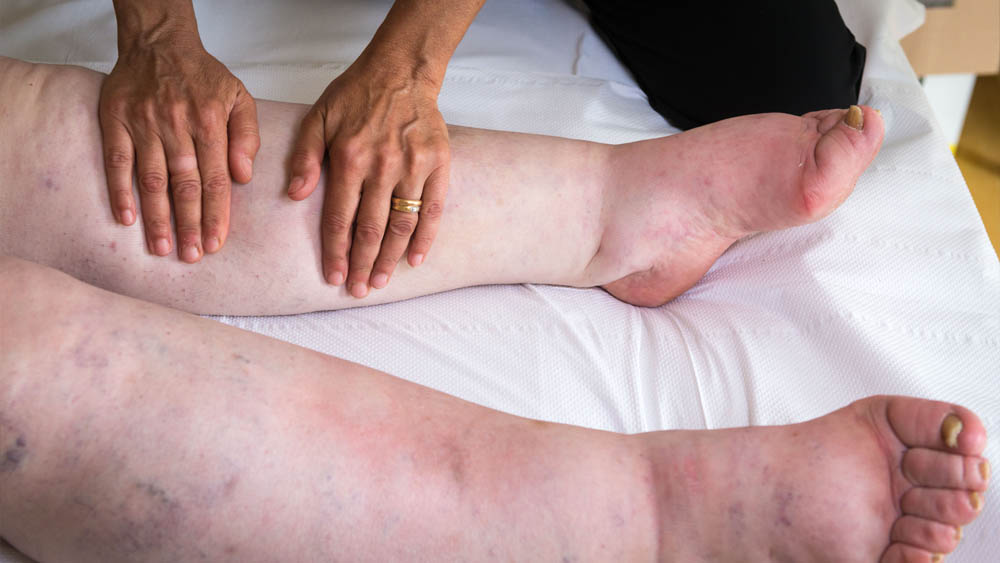Lipedema and Lymphatic Drainage Massage:
What You Knead to Know
GET DIAGNOSED
Share on facebook
Facebook
Share on twitter
Twitter
Share on linkedin
LinkedIn
Lymphatic drainage massage is a highly specialized massage technique performed on lymphedema and lipedema patients to help manage painful symptoms. If you’re suffering from common complications associated with either disorder, such as discomfort and swelling, lymphatic drainage massage is sure to rub you the right way.
Lymphatic drainage massage was first introduced by Austrian husband and wife doctor duo, Emil Vodder, PhD and Estrid Vodder, PhD, in 1932 upon clinical investigation into the lymph vessel system. Their research eventually led them to developing a series of light, rhythmic manipulations to stimulate lymph flow and fluid movement. The unique massaging technique has since evolved to help mindfully manage and mitigate the most troublesome of symptoms associated with lipedema and lymphedema and is always performed by a therapeutic massage therapist who possesses a specialized certification in lymphatic drainage massage, so it’s not to be taken lightly!
What is Lymphatic Drainage Massage?
In a nutshell, lymphatic drainage massage is the unique technique of using gentle, strategic kneading of the muscles and skin to promote the body’s natural lymph drainage processes. Those suffering from lipedema and lymphedema experience dysfunction of proper bodily lymphatic flow, resulting in severe fluid buildup in the underlying tissues that causes pain, swelling, and tenderness-to-the-touch. The lymph system relies heavily on inherent contractions of muscle cells within the walls of lymph vessels and the movement of skeletal muscles to boost lymph through the vessels to the lymph nodes and then to the lymph ducts. Manual lymph drainage uses less than nine ounces of gentle pressure, pushing, prodding, and circular massaging to stimulate lymph flow. While surgical intervention continues to be the dominant therapy option for long-term, successful lipedema management – both cosmetically and medically – undergoing regularly scheduled lymphatic drainage massage sessions in conjunction with wearing compression garments have proved beneficial for many patients living with the painful, disruptive effects of lipedema. Lymphatic drainage massage is also a conservative way to superficially manage the disorder for patients who may not be ready to undergo surgical intervention, such as liposuction. However, it must be noted that lymphatic drainage massage does not remove fat buildup from the tissues, but simply manipulates underlying tissues to help get lymph buildup flowing, which can significantly reduce pain, pressure, and swelling.
How Often Should I Get Lymphatic Drainage Massage?
While everybody is different, it really depends on the stage of your lipedema and how much massaging and manipulation of the muscles you can physically handle. Some patients find the slightest touch to be intolerable, while others possess a higher pain threshold. Generally, most lipedema patients start out with 1-2 sessions a week or a few times a month and work their way up to five sessions per week. Some patients even continue to visit their certified lymphatic drainage massage therapists long after they’ve undergone liposuction to help maintain optimal, healthy flow of lymph buildup. And, lipedema ladies aren’t the only ones privy to the highly specialized massage technique. Wellness gurus, fitness fanatics, bloggers, influencers, celebs, and media personalities have publicly touted the long-term body benefits of having a certified lymphatic drainage massage therapist on speed dial.
As with any new treatment consideration, lipedema patients should always consult with their physician before undergoing any form of therapy to manage symptoms. In some cases, insurance providers cover the costs associated with lymphatic drainage massage. Please be sure to check with any one of our Total Lipedema Care team members to see if professional lymphatic drainage massage is covered by your insurance provider.
To learn more, please contact our Beverly Hills, California office to schedule a consultation with any of our highly trained specialists.

